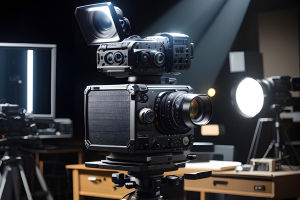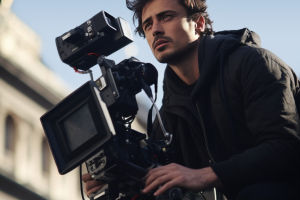Have you ever noticed how movies by certain directors feel distinct from others? Whether it's the mood, the pacing, or even the way characters are portrayed, directors play a crucial role in shaping a film's style.
They are the creative visionaries who guide every element of a movie, from visual aesthetics to storytelling techniques.
In this article, we will dive into how directors influence movie styles and why their unique touch matters so much to the cinematic world.
The Director's Vision: The Heart of Style
Every director approaches a film with a vision—a clear idea of how they want the story to be told and experienced. This vision impacts everything from the choice of colors and lighting to camera angles and actor performances. Directors often develop a personal style or signature that distinguishes their work.
For example, some directors are known for their use of symmetrical shots and pastel color palettes, creating a whimsical atmosphere. This creative control lets directors imprint their personality on the movie, making each project unique.
Visual Style: Crafting the Look and Feel
One of the most noticeable ways directors influence style is through the visual language of the film. This includes cinematography, lighting, set design, and costumes. Directors collaborate closely with cinematographers to decide how scenes are framed and lit, which affects the film's mood and tone. Dark, shadowy lighting can evoke suspense, while bright, natural light may suggest optimism or realism.
Visual choices help communicate the story beyond words, making the director's role essential in creating a cohesive and immersive experience.
Pacing and Editing: Controlling the Movie's Rhythm
Directors also guide the film's pacing—how fast or slow the story unfolds. Some directors prefer quick cuts and fast action to generate excitement, while others allow longer scenes to build emotional depth. Editing, often done with the director's input, plays a key role here. The rhythm of a movie affects audience engagement and emotional response.
Some directors are known for their deliberate pacing, combining intense dialogue with sudden bursts of action, which makes their style instantly recognizable.
Working with Actors: Shaping Performances
Another vital influence directors have is on actor performances. Directors communicate their vision to actors, guiding how characters should behave, speak, and interact. This relationship can deeply affect the film's style, whether it leans toward naturalism, exaggeration, or stylized acting.
Some directors are praised for drawing out intense, nuanced performances, while others may encourage improvisation to add spontaneity. The director's approach to acting style helps define the movie's emotional texture.
Storytelling Techniques: Beyond the Script
While screenplays provide the story framework, directors decide how that story is told on screen. This includes choices about narrative structure, flashbacks, or visual symbolism. Directors may use unconventional storytelling to challenge viewers or create unique effects.
Some directors experiment with non-linear timelines, influencing how audiences perceive and understand the story. These choices shape the style and impact of the film, showcasing how directors extend their influence beyond just visuals.
Genre and Director Style: A Dynamic Relationship
Directors often work within specific genres but bring their own style to them, creating fresh takes on familiar themes. Some directors have mastered specific techniques, like suspense, which helped define genres, while others have redefined genres with unique aesthetics, such as gothic elements in fantasy films.
Directors' personal styles can either align with genre conventions or challenge them, leading to innovative and memorable movies. This dynamic relationship highlights the importance of directorial influence in shaping the cinematic landscape.
Examples of Iconic Directors and Their Styles
Many directors have left lasting marks on cinema through their distinctive styles. Some directors are known for their grand storytelling and emotional depth, skillfully blending spectacle with human stories. Hayao Miyazaki brings enchanting animation to life with rich detail and environmental themes. Each of these directors uses different tools to create their signature styles, proving that directorial choices are central to a film's identity.
Collaboration and Influence: Directors as Leaders
While directors hold creative authority, filmmaking is a collaborative art. Directors work with writers, producers, cinematographers, editors, and actors to bring their vision to life. Their leadership skills impact how smoothly the project runs and how well the style is realized. Effective directors inspire their teams and navigate challenges, ensuring that the movie reflects their artistic intent while meeting practical needs.
Conclusion: What's Your Favorite Director's Style?
Next time you watch a film, take a moment to think about the director behind it. How do their choices shape what you see and feel? Understanding the director's influence can deepen your appreciation for movies as an art form. Whether it's the unique camera work, pacing, or actor performances, directors bring stories to life in ways that resonate long after the credits roll.
Which director's style has captivated you the most? Feel free to share your thoughts—let's celebrate the creative minds that shape the movies we love!


